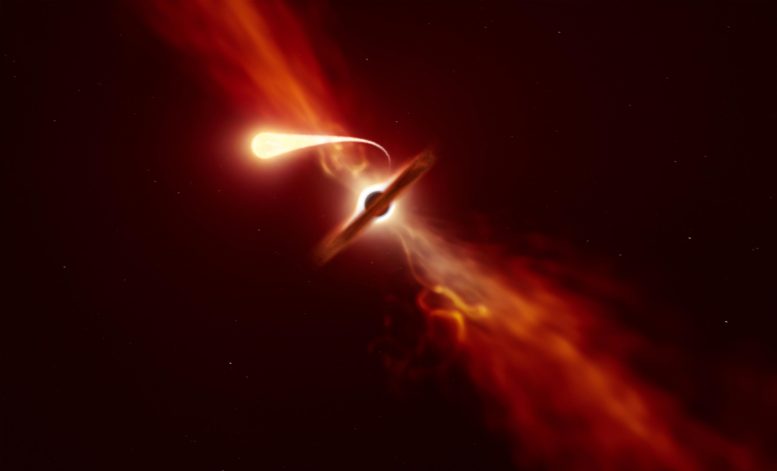
This illustration depicts a star (in the foreground) experiencing spaghettification as it’s sucked in by a supermassive black hole (in the background) during a ‘tidal disruption event’. In a new study, done with the help of ESO’s Very Large Telescope and ESO’s New Technology Telescope, a team of astronomers found that when a black hole devours a star, it can launch a powerful blast of material outwards. Credit: ESO/M. Kornmesser
Using telescopes from the European Southern Observatory (ESO) and other organizations around the world, astronomers have spotted a rare blast of light from a star being ripped apart by a supermassive black hole. The phenomenon, known as a tidal disruption event, is the closest such flare recorded to date at just over 215 million light-years from Earth, and has been studied in unprecedented detail. The research is published today in Monthly Notices of the Royal Astronomical Society.
Using telescopes from ESO and other organizations around the world, astronomers have spotted a rare blast of light from a star being ripped apart by a supermassive black hole. This video summarizes the findings. Credit: ESO
“The idea of a black hole ‘sucking in’ a nearby star sounds like science fiction. But this is exactly what happens in a tidal disruption event,” says Matt Nicholl, a lecturer and Royal Astronomical Society research fellow at the University of Birmingham, UK, and the lead author of the new study. But these tidal disruption events, where a star experiences what’s known as spaghettification as it’s sucked in by a black hole, are rare and not always easy to study. The team of researchers pointed ESO’s Very Large Telescope (VLT) and ESO’s New Technology Telescope (NTT) at a new flash of light that occurred last year close to a supermassive black hole, to investigate in detail what happens when a star is devoured by such a monster.
Astronomers know what should happen in theory. “When an unlucky star wanders too close to a supermassive black hole in the center of a galaxy, the extreme gravitational pull of the black hole shreds the star into thin streams of material,” explains study author Thomas Wevers, an ESO Fellow in Santiago, Chile, who was at the Institute of Astronomy, University of Cambridge, UK, when he conducted the work. As some of the thin strands of stellar material fall into the black hole during this spaghettification process, a bright flare of energy is released, which astronomers can detect.
This animation depicts a star experiencing spaghettification as it’s sucked in by a supermassive black hole during a ‘tidal disruption event’. In a new study, done with the help of ESO’s Very Large Telescope and ESO’s New Technology Telescope, a team of astronomers found that when a black hole devours a star, it can launch a powerful blast of material outwards. Credit: ESO/M. Kornmesser
Although powerful and bright, up to now astronomers have had trouble investigating this burst of light, which is often obscured by a curtain of dust and debris. Only now have astronomers been able to shed light on the origin of this curtain.
“We found that, when a black hole devours a star, it can launch a powerful blast of material outwards that obstructs our view,” explains Samantha Oates, also at the University of Birmingham. This happens because the energy released as the black hole eats up stellar material propels the star’s debris outwards.
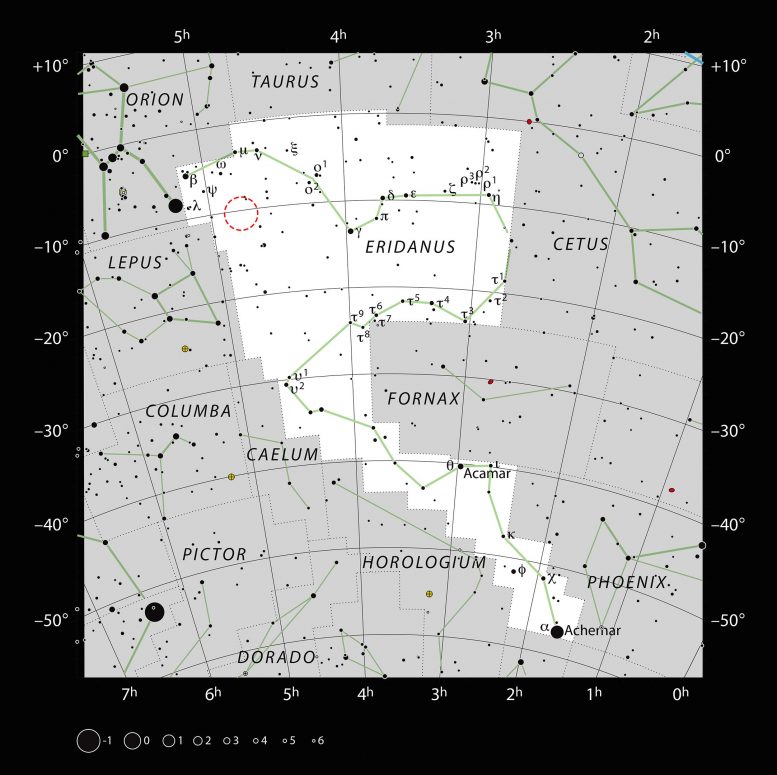
This chart shows the location of AT2019qiz, a tidal disruption event, in the constellation of Eridanus. The map includes most of the stars visible to the unaided eye under good conditions, and the location of AT2019qiz is indicated by a red circle. Credit: ESO, IAU and Sky & Telescope
The discovery was possible because the tidal disruption event the team studied, AT2019qiz, was found just a short time after the star was ripped apart. “Because we caught it early, we could actually see the curtain of dust and debris being drawn up as the black hole launched a powerful outflow of material with velocities up to 10 000 km/s,” says Kate Alexander, NASA Einstein Fellow at Northwestern University in the US. “This unique ‘peek behind the curtain’ provided the first opportunity to pinpoint the origin of the obscuring material and follow in real time how it engulfs the black hole.”
The team carried out observations of AT2019qiz, located in a spiral galaxy in the constellation of Eridanus, over a 6-month period as the flare grew in luminosity and then faded away. “Several sky surveys discovered emission from the new tidal disruption event very quickly after the star was ripped apart,” says Wevers. “We immediately pointed a suite of ground-based and space telescopes in that direction to see how the light was produced.”
This video sequence zooms in on the galaxy where the AT2019qiz tidal disruption event is taking place. This phenomenon, a blast of light from a star being ripped apart by a supermassive black hole, has been studied by ESO telescopes. Credit: ESO/Digitized Sky Survey 2/N. Risinger (skysurvey.org)
Multiple observations of the event were taken over the following months with facilities that included X-shooter and EFOSC2, powerful instruments on ESO’s VLT and ESO’s NTT, which are situated in Chile. The prompt and extensive observations in ultraviolet, optical, X-ray and radio light revealed, for the first time, a direct connection between the material flowing out from the star and the bright flare emitted as it is devoured by the black hole. “The observations showed that the star had roughly the same mass as our own Sun, and that it lost about half of that to the monster black hole, which is over a million times more massive,” says Nicholl, who is also a visiting researcher at the University of Edinburgh.
The research helps us better understand supermassive black holes and how matter behaves in the extreme gravity environments around them. The team says AT2019qiz could even act as a ‘Rosetta stone’ for interpreting future observations of tidal disruption events. ESO’s Extremely Large Telescope (ELT), planned to start operating this decade, will enable researchers to detect increasingly fainter and faster evolving tidal disruption events, to solve further mysteries of black hole physics.
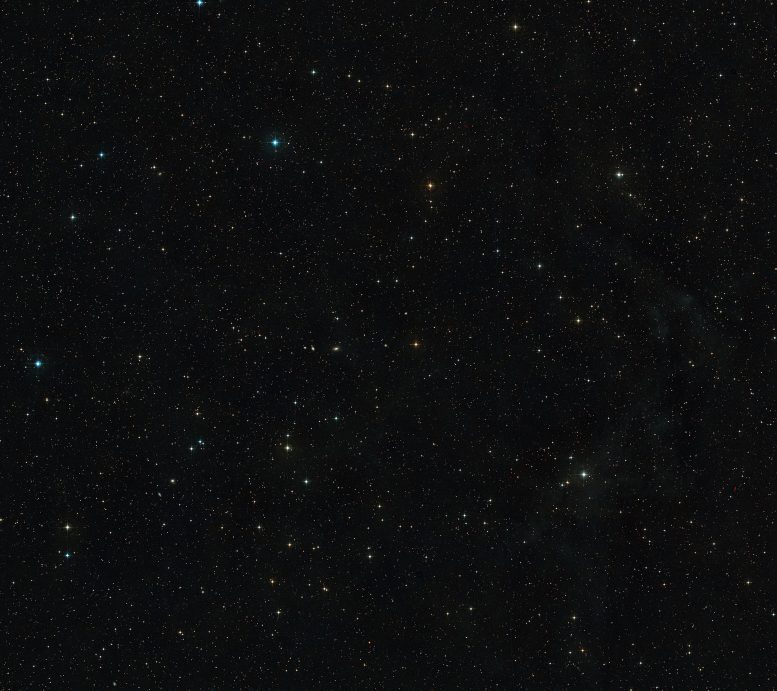
This image shows the sky around the location of AT2019qiz, at the very centre of the frame. This picture was created from images in the Digitized Sky Survey 2.
Credit:
ESO/Digitized Sky Survey 2. Acknowledgement: Davide De Martin
Reference: “An outflow powers the optical rise of the nearby, fast-evolving tidal disruption event AT2019qiz” by M Nicholl, T Wevers, S R Oates, K D Alexander, G Leloudas, F Onori, A Jerkstrand, S Gomez, S Campana, I Arcavi, P Charalampopoulos, M Gromadzki, N Ihanec, P G Jonker, A Lawrence, I Mandel, S Schulze, P Short, J Burke, C McCully, D Hiramatsu, D A Howell, C Pellegrino, H Abbot, J P Anderson, E Berger, P K Blanchard, G Cannizzaro, T-W Chen, M Dennefeld, L Galbany, S González-Gaitán, G Hosseinzadeh, C Inserra, I Irani, P Kuin, T Müller-Bravo, J Pineda, N P Ross, R Roy, S J Smartt, K W Smith, B Tucker, L Wyrzykowski and D R Young, 12 October 2020, Monthly Notices of the Royal Astronomical Society.
DOI: 10.1093/mnras/staa2824
The team is composed of M. Nicholl (Birmingham Institute for Gravitational Wave Astronomy and School of Physics and Astronomy, University of Birmingham, UK [Birmingham] and Institute for Astronomy, University of Edinburgh, Royal Observatory, UK [IfA]), T. Wevers (Institute of Astronomy, University of Cambridge, UK), S. R. Oates (Birmingham), K. D. Alexander (Center for Interdisciplinary Exploration and Research in Astrophysics and Department of Physics and Astronomy, Northwestern University, USA [Northwestern]), G. Leloudas (DTU Space, National Space Institute, Technical University of Denmark, Denmark [DTU]), F. Onori (Istituto di Astrofisica e Planetologia Spaziali (INAF), Roma, Italy), A. Jerkstrand (Max-Planck-Institut für Astrophysik, Garching, Germany and Department of Astronomy, Stockholm University, Sweden [Stockholm]), S. Gomez (Center for Astrophysics | Harvard & Smithsonian, Cambridge, USA [CfA]), S. Campana (INAF–Osservatorio Astronomico di Brera, Italy), I. Arcavi (The School of Physics and Astronomy, Tel Aviv University, Israel and CIFAR Azrieli Global Scholars program, CIFAR, Toronto, Canada), P. Charalampopoulos (DTU), M. Gromadzki (Astronomical Observatory, University of Warsaw, Poland [Warsaw]), N. Ihanec (Warsaw), P. G. Jonker (Department of Astrophysics/IMAPP, Radboud University, the Netherlands [Radboud] and SRON, Netherlands Institute for Space Research, the Netherlands [SRON]), A. Lawrence (IfA), I. Mandel (Monash Centre for Astrophysics, School of Physics and Astronomy, Monash University, Australia and The ARC Center of Excellence for Gravitational Wave Discovery – OzGrav, Australia and Birmingham), S. Schulze (Department of Particle Physics and Astrophysics, Weizmann Institute of Science, Israel [Weizmann]) P. Short (IfA), J. Burke (Las Cumbres Observatory, Goleta, USA [LCO] and Department of Physics, University of California, Santa Barbara, USA [UCSB]), C. McCully (LCO and UCSB) D. Hiramatsu (LCO and UCSB), D. A. Howell (LCO and UCSB), C. Pellegrino (LCO and UCSB), H. Abbot (The Research School of Astronomy and Astrophysics, Australian National University, Australia [ANU]), J. P. Anderson (European Southern Observatory, Santiago, Chile), E. Berger (CfA), P. K. Blanchard (Northwestern), G. Cannizzaro (Radboud and SRON), T.-W. Chen (Stockholm), M. Dennefeld (Institute of Astrophysics Paris (IAP), and Sorbonne University, Paris), L. Galbany (Departamento de Física Teórica y del Cosmos, Universidad de Granada, Spain), S. González-Gaitán (CENTRA-Centro de Astrofísica e Gravitação and Departamento de Física, Instituto Superior Técnico, Universidade de Lisboa, Portugal), G. Hosseinzadeh (CfA), C. Inserra (School of Physics & Astronomy, Cardiff University, UK), I. Irani (Weizmann), P. Kuin (Mullard Space Science Laboratory, University College London, UK), T. Muller-Bravo (School of Physics and Astronomy, University of Southampton, UK), J. Pineda (Departamento de Ciencias Fisicas, Universidad Andrés Bello, Santiago, Chile), N. P. Ross (IfA), R. Roy (The Inter-University Centre for Astronomy and Astrophysics, Ganeshkhind, India), S. J. Smartt (Astrophysics Research Centre, School of Mathematics and Physics, Queen’s University Belfast, UK [QUB]), K. W. Smith (QUB), B. Tucker (ANU), L. Wyrzykowski (Warsaw), D. R. Young (QUB).

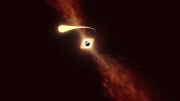


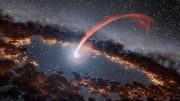
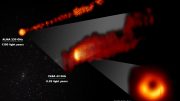

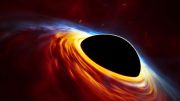
How do the last moments of a star devoured by a black hole look like?
Did you ever wonder who created black holes and now controls them from sucking up the universe? Indeed. So have I. But I know Him.
So am I correct in thinking that this event happened 215 million years ago (give or take a few 100,000) ????
So more fake news! Where is the actual video? Not stupid animations, the headline says “Telescopes Record Last Moments of Star Devoured by a Black Hole” But no real video!
scitechdaily is now blocked due to being fake click bait!
If roughly half the stars material is ejected away from the black hole as it is sucked in, how does that happen? Does the star accelerate so much that some of its material reaches escape velocity? Does the black hole emit some of the stars material from its polar regions? Is some of the stars material converted into energy before it crosses the event horizon? WHAT???
If an object (such as stellar gas) approaching the event horizon of a black hole appears to move slower and slower until time almost seems to stop, how can observers on earth see the star’s gas fall into the black hole and measure its radiation, since it would take almost an infinite amount of time to occur from our perspective?
So where is the picture? All I see is some cartoon.
Click bait! No actual video. Only animation!
Tidal disruption does not cause spagettification. Who writes these blurbs, a liberal arts undergrad?
Also, LOL at all the Boomers who think there’s a telescope capable of visible light video from 215 million light years away.
The definition of a black hole used to be that it was so dense, and it’s gravitational pull so immense, that nothing could escape it. Even light waves could not and that’s why it was called a ‘black hole’. Now, they appear to be erupting and sending dust and energy off in various directions, indicating (per science’s own definition) that these are, at best, gray holes. It is interesting how they can describe them as if they understand them…which they do not.
They don’t know what it was what it was sucked into or what happened. it’s all opinion & guesswork in 10 years they’ll be saying something different. Waste of billions of §€£ on rubbish that will never serve any purpose other than keeping people in grants & super expensive toys.
Yet another example of scientists speaking out their rear ends. They need to get jobs.
Bottom line; tl;dr-
The emissions occur *near* the black hole, before gravity crosses the threshold which prevents light from escaping.
My understanding is that black holes tend to rotate extremely fast. The emissions are all caused in part by shreds of the star speeding up as gravity pulls it around the black hole. Also, the emissions are **before** the material crosses the “event horizon”. The event horizon is the area where gravity becomes too much for light to escape and the closest a black hole has to a “surface”.